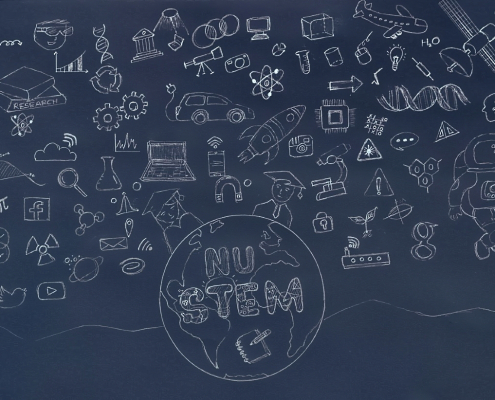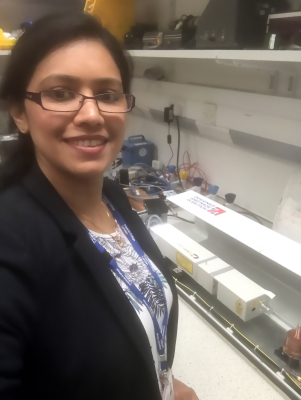Case Study: Dr Juna Sathian
Juna is a photonics physicist working at Northumbria University.
Affordable technology
Photonics is the branch of physics that studies light and the technologies that create it. Juna is curious about finding new applications of photonics technology. She is particularly interested in improving a type of laser which uses alexandrite crystals to make these lasers more affordable and compact. She explains:
This technology should play an important technological role as the next generation of low-cost, high-brightness light sources in a range of scientific, medical and industrial applications.
Masers: microwaves + lasers
After finishing her physics studies in Australia, Juna moved to the UK, where she worked on masers and lasers. Masers are like lasers but they produce beams of microwaves instead of light.
The downside of masers, Juna says, is that they only work at very cold temperatures. Juna was part of the research team that developed a maser that could operate at room-temperature. This will make masers cheaper and easier to use.
As part of her job, Juna has been teaching physics to undergraduate students for a few years now and really enjoys it:
I love the freedom for scientific research, teaching and mentoring students, all in one job!
Juna’s advice to young people
Focus on your goal and be honest at work, you won’t be disappointed.
Drawing away
Outside of her work, Juna is a big fan of history. She loves reading about past civilisations and visiting places of historic interest. One of the favourite places she visited was the Taj_Mahal. Juna also enjoys pencil drawing and drew the diagram below showing all different aspects of science and STEM.





